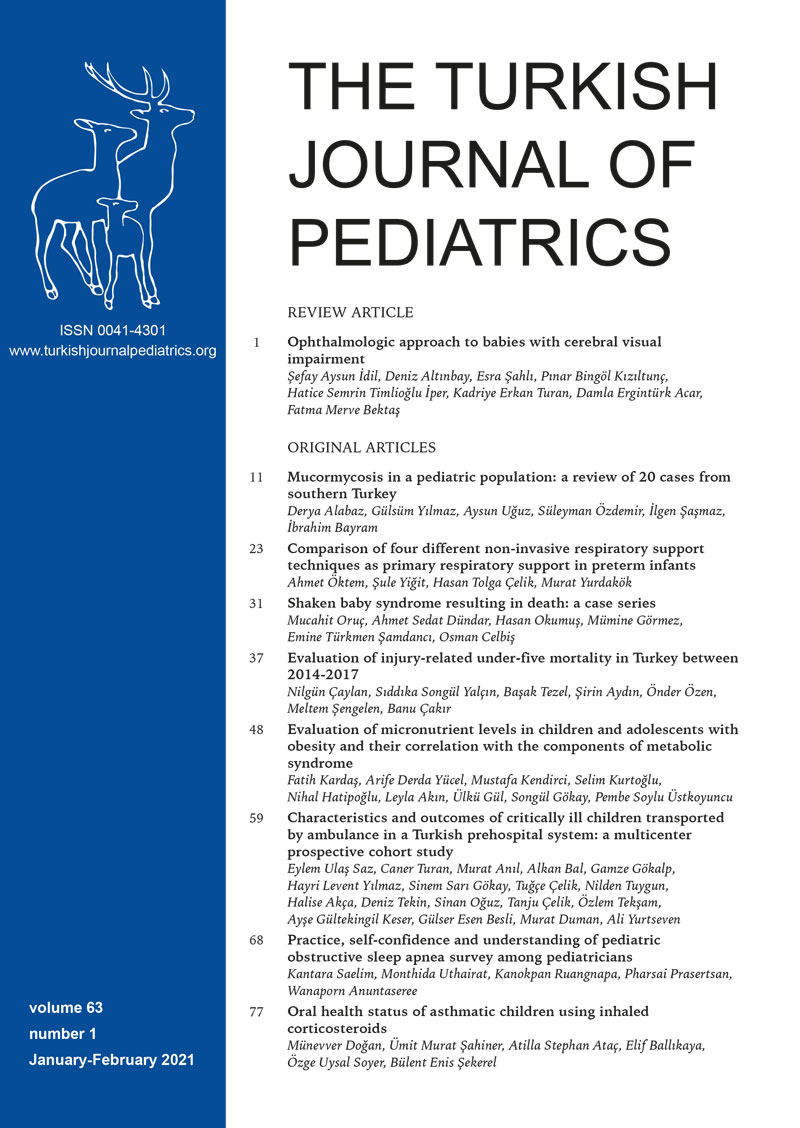Abstract
Background. Cerebral visual impairment (CVI) is an increasingly common type of visual disturbance in infants and children. The increased incidence is associated with improved neonatal intensive care services and survival of premature infants, especially in developed countries and our country. For accurate ophthalmological evaluation, it is important to know the behavioral responses to visual stimuli that are unique to CVI such as color preference, need for movement, visual latency, visual field preference, and difficulty in visual complexity.
Methods. This review is prepared to draw attention to the subject within the scope of Ankara University Vision, Artificial Vision and Low Vision Rehabilitation training programs.
Results. The most common causes are hypoxia and perinatal ischemia. Ocular structures are generally normal or are not sufficient to explain the visual impairment. Diagnosis and habilitation methods differ from visual impairment of ocular origin. As a result, early diagnosis of CVI in infants and toddlers and an effective visual habilitation with a multidisciplinary approach where ophthalmologists and pediatricians lead the team is very valuable.
Conclusions. Early diagnosis and early visual habilitation will increase the quality of life of babies and will provide important gains for families and therefore the whole society. Pediatricians should be familiar with this group of disturbances and the available resources, as they are best placed to refer the child for evaluation and rehabilitation and encourage the family for follow-up.
Keywords: cerebral, low vision, visual habilitation, visual impairment
Copyright and license
Copyright © 2021 The Author(s). This is an open access article distributed under the Creative Commons Attribution License (CC BY), which permits unrestricted use, distribution, and reproduction in any medium or format, provided the original work is properly cited.














